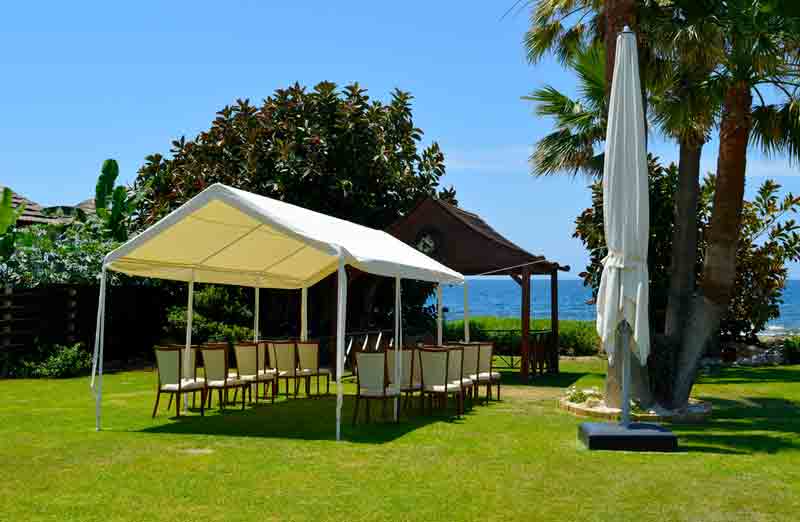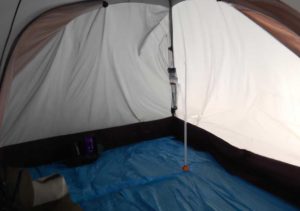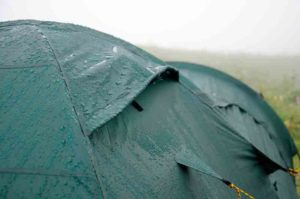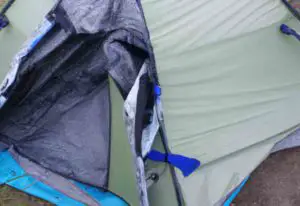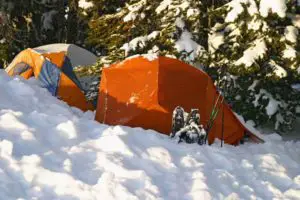How to Hold down a Canopy Tent on Concrete? People often set up canopy tents on the grass to keep their guests and themselves cool and dry, but if you can’t find a good patch of grass or there is no lawn available, what next? One solution is concrete. Concrete comes in many different colors and textures so you can match your tent with it. You might be wondering how well concrete will work for this purpose. Well, it turns out that concrete makes a great surface for setting up a canopy tent because it provides plenty of friction so the stakes will stay put without sinking into the ground too much. It also has enough given to bounce back after heavy rains like water-filled rubber balls (puddles). If you do decide to use concrete as your surface then we’ll go over how to hold down your canopy tent on concrete.
How to Keep a Canopy Tent Down on Concrete Steps
1. Use stakes that are long enough so you can push them about 8 inches into the ground. These stakes will be used to keep the canopy tent sturdy and stable for when there is wind. Be sure to use more stakes the bigger your tent is.
2. Be sure to use weights on the canopy tent after you’ve set up and anchored it properly. This extra weight will help keep your canopy tent down more securely. You can use bags of quick cement or used tires, barrels, water jugs, or other heavy objects that you have on hand as weights.
3. Place the stakes on the outside of your canopy tent and turn them so that they face down. Make sure you place one stake right next to each other, halfway between each pole on both sides. The more support you use for this tent, the more wind-resistant it will be during stormy weather.
4. Don’t forget to hammer the stakes down so they are flush with the ground.
5. For this to work, you have to have a canopy tent that is free-standing and can stand alone without being attached to another object or being staked into the ground. If you don’t have a free-standing canopy tent, you can use weights on each of the three legs to hold it down.
6. If your canopy tent does not have free-standing legs, then just hammer in stakes into the bottom of each leg and attach them with chains so that they will stay down when there is wind.
7. Use weights like concrete blocks or bags of quick cement to attach to the chains.
8. The more support, the better so be sure to use all of these different techniques to hold down your canopy tent on concrete because it will help keep everyone safe.
9. Be sure you hammer each stake several times so they are securely in place before setting up chairs or tables around your canopy tent for a party.
10. A smart way to make sure your stakes and weights stay in place is to hammer them down and then back up a bit. Then you can drive the stakes in again with the weight on top of it so they will be held securely in place when there is wind or rain (and puddles).
11. Be sure to keep your canopy tent clean by removing the weights every night, changing them if there is rain, and using a broom or leaf blower to remove dirt.
12. It’s best not to leave your canopy tent up for more than three days unless you use heavy-duty stakes like rebar (steel rods) that can be used over and over again.
13. Once you’ve finished your event, store your canopy tent in a dry place and make sure it is completely dry before folding or rolling it up. You can use a leaf blower to make sure the inside of the canopy is clean and dust-free before storing it away for next time.
Why use concrete?
Concrete is very useful for this purpose because it provides plenty of friction and keeps the stakes and weights from shifting or sliding. It also has enough given to bounce back after heavy rains like water-filled rubber balls (puddles). If you do decide to use concrete as your surface then we’ll go over how to hold down your canopy tent on concrete.
Other surfaces to use for a canopy tent:
Grass – Grass is a good surface because it’s soft and natural, but can be difficult to keep stable for larger tents.
Dirt – Dirt is similar to grass in the sense that it doesn’t give much support and will shift as you place things on top of them as well as not being as sturdy as concrete when the stakes are pounded in.
Asphalt – Asphalt is too slick to hold down a canopy tent so you have to be careful with this one since it’s not safe.
Cement – Cement can work just as well if not better than concrete in terms of giving your canopy its much-needed support, but isn’t as good of a surface to leave your canopy on the outside or in the rain because it will get moldy and become pretty gross.
Sand – As long as it’s not wet, sand can be an ok surface but is easily displaced by wind and shifting since it won’t give you any weight like a concrete wall!
Leaves/Snow – You don’t want things blowing away so you have to be careful with leaves and snow, but it will work in a pinch.
Pavement – Pavement is no good for this purpose because it can get slippery when wet or icy! Plus the heat from the sun can damage your canopy over time!!
Trees/Objects – Putting things on top of your canopy to hold it in place while going against the wind isn’t going to
Tips for getting the most out of your canopy tent experience!
When you’re going to use your canopy tents outside, make sure it is clean and dry before setting up because wet canvas will sag.
Make sure the surface has enough given so that there’s no chance of a rod or pole poking through when people are sitting inside it. If this does happen, they may get injured and you could be held liable.
Try to avoid putting things on top of your canopy as much as possible because the extra weight can cause the stakes to move, thus creating an unsafe situation. The sturdier your canopy is, the safer it will be for everyone!
If there’s a chance that rain will come, you want to put up your canopy tent during the day so that there’s plenty of time to dry it out should there be rain. It’s best not to leave it outside overnight if possible.
Finally, you should always store your canopy tent indoors until its next use – don’t let it sit under your deck or in your garage where it will get dusty!

